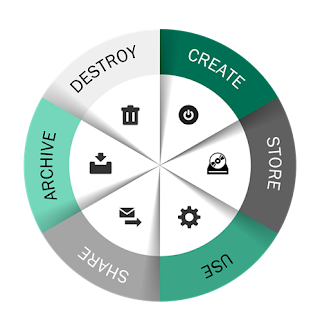Twitter Feed
Cloud Migration Part 2: Classify your data
In my first post of this series, “Cloud migration part one: An overview,” I provided a high-level summary of how enterprises should migrate applications to the cloud. In this installment,…
Could Budget Sweeps Fix Your Cybersecurity Problem?
A recent roundtable discussion in Washington, DC with Federal IT and Cyber leaders focused on the business drivers, challenges and evolving strategies around cybersecurity in government. After an opening presentation…
Cloud Migration Part 1: An Overview
Cloud Migration Part One: An Overview Business is all about efficiency and effectiveness. In today’s world, however, those twin goals almost always lead to cloud migration. This anecdotal observation…
A Personal Technology for Good Redux: Call for Code
In 2013 I had the opportunity to manage a $2M demonstration of how cloud computing could be used to support natural disasters. In that NCOIC Geospatial Community Cloud (GCC) demonstration,…
A Path to Hybrid Cloud
Cloud computing is now an operational reality across every industry. Organizations that fail to leverage this economic, operational and technology consumption model are merely consigning themselves to irrelevance. The rapid…
Human-Led Collaboration with Machines
When charged with managing large and complex efforts, an overarching project management task is risk assessment. It involves documenting the current situation, comparing it to the past, and understanding the…
Sensomorphic
240 million results are returned in 1.06 seconds (as of May 28, 2018) when you search for cloud computing in a Google search. With that much information available, and that many…
Artificial Intelligence and the Project Manager
Organizations use teams to create wealth, market share, customer service, competitive advantage, and organizational success. Effective teams accomplish their assigned end goals by engaging in collaboration as a joint learning…
Building A Collaborative Team
Recently, Harvard Business Review cited some insightful research into team behavior at 15 multinational companies. It found that although these teams tended to be large, virtual, diverse, and composed of…
Welcome the New Project Manager!
According to CIO.com, the six traits of highly effective project managers are: Be a strategic business partner who can offer higher-level strategic leadership skills, not just technical management skills, provide…
Today data has replaced money as the global currency for trade.
“McKinsey estimates that about 75 percent of the value added by data flows on the Internet accrues to “traditional” industries, especially via increases in global growth, productivity, and employment. Furthermore, the United Nations Conference on Trade and Development (UNCTAD) estimates that about 50 percent of all traded services are enabled by the technology sector, including by cross-border data flows.”
As the global economy has become fully dependent on the transformative nature of electronic data exchange, its participants have also become more protective of data’s inherent value. The rise of this data protectionism is now so acute that it threatens to restrict the flow of data across national borders. Data-residency requirements, widely used to buffer domestic technology providers from international competition, also tends to introduce delays, cost and limitations to the exchange of commerce in nearly every business sector. This impact is widespread because it is also driving:
- Laws and policies that further limit the international exchange of data;
- Regulatory guidelines and restrictions that limit the use and scope of data collection; and
- Data security controls that route and allow access to data based on user role, location and access device.
A direct consequence of these changes is that the entire business enterprise spectrum is now faced with the challenge of how to classify and label this vital commerce component.
 |
|
Figure 1– The data lifecycle
|
The challenges posed here are immense. Not only is there an extremely large amount of data being created everyday but businesses still need to manage and leverage their huge store of old data. This stored wealth is not static because every bit of data possesses a lifecycle through which it must be monitored, modified, shared, stored and eventually destroyed. The growing adoption and use of cloud computing technologies layers even more complexity to this mosaic. Another widely unappreciated reality being highlighted in boardrooms everywhere is how these changes are affecting business risk and internal information technology governance. Broadly lumped into cybersecurity, the sparsity of legal precedent in this domain is coupled almost daily with a need for headline driven, rapid fire business decisions.
To deal with this new reality, enterprises must standardize and optimize the complexity associated with managing data. Success in this task mandates a renewed focus on data classification, data labeling and data loss prevention. Although these data security precautions have historically been
glossed over as too expensive or too hard, the penalties and long term pain associated with a data breach incident has raised the stakes considerably. According the Global Commission on Internet Governance, the average financial cost of a single data breach could exceed $12,000,000 [1] , which includes:
- Organizational costs: $6,233,941
- Detection and Escalation Costs: $372,272
- Response Costs: $1,511,804
- Lost Business Costs: $3,827,732
- Victim Notification Cost: $523,965
So is adequate data classification still just simply a bridge too far?
While the competencies required to implement an effective data management program are significant, they are not impossible. Relevant skillsets are, in fact, foundational to the deployment of modern business automation which, in turn, represents the only economical path towards streamlining repeatable processes and reducing manual tasks. Minimum steps include:
- Improving enterprise awareness around the importance of data classification
- Abandoning outdated or realistic classification schemes in order to adopt less complex ones
- Clarifying organizational roles and responsibilities while simultaneously removing those that have been tailored to individuals
- Focus on identifying and classifying data, not data sets.
- Adopt and implement a dynamic classification model.[2]
The modern enterprise must either build these competencies in-house or work with a trusted third party to move through these steps. Since the importance of data will only increase, the task of implementing a modern data classification and modeling program is destined to become even more business critical.
( This post was brought to you by IBM Global Technology Services. For more content like this, visit Point B and Beyond.)
[2] Recommended steps adapted from “Rethinking Data Discovery And Data Classification by Heidi Shey and John Kindervag, October 1, 2014, available from IBM at https://www-01.ibm.com/common/ssi/cgi-bin/ssialias?htmlfid=WVL12363USEN
( Thank you. If you enjoyed this article, get free updates by email or RSS – © Copyright Kevin L. Jackson 2015)
Cloud Computing
- CPUcoin Expands CPU/GPU Power Sharing with Cudo Ventures Enterprise Network Partnership
- CPUcoin Expands CPU/GPU Power Sharing with Cudo Ventures Enterprise Network Partnership
- Route1 Announces Q2 2019 Financial Results
- CPUcoin Expands CPU/GPU Power Sharing with Cudo Ventures Enterprise Network Partnership
- ChannelAdvisor to Present at the D.A. Davidson 18th Annual Technology Conference
Cybersecurity
- Route1 Announces Q2 2019 Financial Results
- FIRST US BANCSHARES, INC. DECLARES CASH DIVIDEND
- Business Continuity Management Planning Solution Market is Expected to Grow ~ US$ 1.6 Bn by the end of 2029 - PMR
- Atos delivers Quantum-Learning-as-a-Service to Xofia to enable artificial intelligence solutions
- New Ares IoT Botnet discovered on Android OS based Set-Top Boxes


